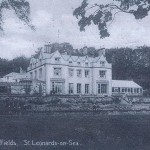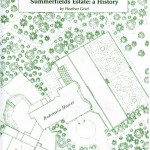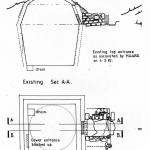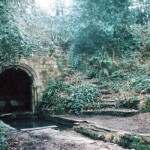A History
A Book by Heather Grief, in aid of the Bohemia Walled Garden Association
Tony May wrote about the Bohemia Walled Garden Association in Hastings Town’s April issue. The Association is making good progress and Hastings Borough Council has repaired a hole in the south wall. St. Mary Star of the Sea school children are tending a plot in the walled garden, and enjoy watching the progress of Ray Grief’s sunflower plants – they are a lot taller than the ones at home because the soil is very fertile through long years of cultivation. The BWGA is keen for other interested groups to get involved and cultivate a patch. In May, Sue Thomson and Heather Grief organised a fund-raising day, which raised £300. As well as the sale of bric-a-brac, plants and second-hand books etc., Heather did two talks, one on the Bayeux Tapestry (her pet subject) and one on a history of the land on which the walled garden sits. She took the audience back to Anglo-Saxon times and Domesday Book, when the area was known as Croteslei Manor. ‘Cheney’ was added later in the Middle Ages, after the family which owned it. Connections with the ancient hospital of St. Mary Magdalen (which survives as the Magdalen Charity), and with the Wailer family, led on to its first mention as ‘Bohemia Farm’ -after the cream teas served outside, or Gipsy Bohemian fashion, to early tourists enjoying the walk past the farmhouse to Hollington. She then outlined the changes that Wastel Brisco made from 1831 – the popular path was diverted (now Brisco~s Walk) so that he could enclose a large private estate on what had been farmland; he built the walled garden, ‘Prospect Mound’, the ‘Roman’ bath and Ice House.

as a Prep School.
The estate’s next phase was as an additional site for Summer Fields Prep school (the main site in Oxford is still a school); from 1903 to 1966, up to 65 boys aged 7-13 lived in the extended mansion and enjoyed playing in the grounds. Then the County Borough of Hastings compulsorily purchased the estate, intending to build a ‘civic centre’; they did the ambulance, police and fire stations, and law courts, but then the Local Government Act of 1974 stripped Hastings of its powers and income, and the planned new town hall-cum-council office block was never built. Meantime, the overcrowded Woodlands Girls Secondary School used the mansion as an annexe from 1966 to 1972, before the buildings were demolished later that year.

Bohemia Mansion and part of the grounds,
including the Ice House, at the bottom edge.
In her book, Heather has included much more information, collected from many sources, including family scandals, a fatal accident and the prep school’s annual Hay Feast. At the back of the book is a series of ten maps from 1795 on, showing how the area has changed, and there are interesting drawings and photos – former Woodlands girls have fond memories of the grounds and of sitting on the grand staircase – photo from the 1920 sale catalogue. She has given a clear explanation of the walled garden’s structure, how to get to it, and when it is Open to the public.

The book is A4 size, has 46 pages and costs £5-50, of which £1 goes to the BWGA. It is available from: Vale Hardware, Vale Rd. Silverhill; Bohemia Village Voice, 79 Bohemia Rd; Hillcrest Garage, 60 Tower Road West; James McAlister’s Newsagents, 5A Bexhill Rd, Bo-Peep; Chapel News, Chapel Lane, Westfield; and from Sunday 1″ August at Hastings History House, 21 Courthouse Street, Old Town (when she is repeating her Bohemia Estate talk at 4pm). She hopes to have the book in Hastings Information Centre, Town Hall, Queen’s Road, and in Waterstones, Priory Meadow t o o by then. You can also buy direct from her.
Tel. 01424 444277

“Hastings Town” August 2010
All articles, photographs and drawings on this web site are World Copyright Protected. No reproduction for publication without prior arrangement. © World Copyright 2017 Cinque Ports Magazines Rye Ltd., Guinea Hall Lodge Sellindge TN25 6EG